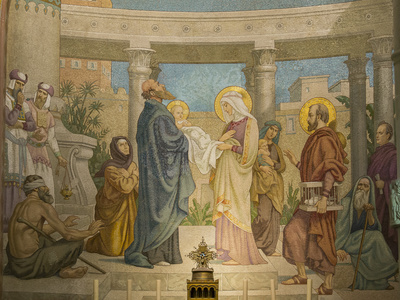Our view of Christmas and the events at Bethlehem are often more like a snapshot instead of the slow unfolding of what really happened. We cram and compress events that occurred over several years into one day, one moment in time. Several years ago Hollywood set out to make a realistic film about Christmas. They included the community discomfort and anger over Mary’s pregnancy, the difficult decision of Joseph, the long and perilous journey from Nazareth to Bethlehem. They followed Luke’s narrative about the shepherds. But then departed from their attempt at historical accuracy and had the Magi arrive at the stable so they could end with a Christmas card scene of the nativity.
Over the past month, we’ve looked forward to the Christmas celebration. We’ve considered the declarations of angels, the mystery of the incarnation, to the awe of adoration, and the joy of jubilation. But there is yet two more pieces of the story that are often overlooked. They come has a kind of an afterthought, a postscript to the main event of the birth. Yet, they provide affirmation to all that proceeded them.
Matthew includes an uncomfortable and difficult to consider climax to his retelling of Jesus’ birth. We know for certain that the Magi did not show up on Christmas Eve but some time later. Perhaps up to two years later. After the Magi’s visit to Bethlehem and the giving of the gifts, they were warned in a dream to go home a different way. Joseph was also warned in a dream after the Magi had departed. “Now when they had gone, behold, an angel of the Lord appeared to Joseph in a dream and said, “Get up! Take the Child and His mother and flee to Egypt, and remain there until I tell you; for Herod is going to search for the Child to destroy Him.”” (Matthew 2:13, NASB95) And Herod did strike Bethlehem with a vengeance.
Matthew records, “Then when Herod saw that he had been tricked by the magi, he became very enraged, and sent and slew all the male children who were in Bethlehem and all its vicinity, from two years old and under, according to the time which he had determined from the magi.” (Matthew 2:16, NASB95) This was not out of character for the great builder king. History records that he also killed many of his sons because of perceived threats to his kingship. The slaughter of the innocents is a troubling part of Christmas that doesn’t fit our pristine snapshot. Yet, even its ugliness it affirms Jesus’ identity as King of kings. That’s the one thing evil never comprehends. By striking out and trying to silence perceived threats it confirms the very truth it is trying to snuff out.
Luke also looks past the events of the birth to provide affirmation of Jesus’s name and mission. Eight days after Jesus’ birth he was circumcised according to Jewish tradition and law. It was then that his name was announced. Luke also records, “And when the days for their purification according to the law of Moses were completed, they brought Him up to Jerusalem to present Him to the Lord.” (Luke 2:22, NASB95) Looking back at Leviticus tells us that the young family’s trip to the Temple would have been 41 days after Jesus’ birth. Their visit had a two-fold purpose. There was a sacrifice to be offered on Mary’s behalf and a sacrificial offering for the first-born son. That they made the trip tells us about their Jewish faith and practice. The fact that they offered two turtledoves instead of a lamb tells us that they were a poor family.
At the Temple that day were two individuals instrumental in affirming Jesus and his mission. You can read about Simeon and Anna in Luke 2:25-38. Both were devout, aged, and practically lived at the Temple. Both were filled with the Holy Spirit and looked for the fulfillment of God’s promises to Israel. When Simeon saw Jesus he said, ““Now Lord, You are releasing Your bond-servant to depart in peace, According to Your word; For my eyes have seen Your salvation, Which You have prepared in the presence of all peoples, A Light of revelation to the Gentiles, And the glory of Your people Israel.”” (Luke 2:29–32, NASB95) He blessed the family and warned Mary, “Behold, this Child is appointed for the fall and rise of many in Israel, and for a sign to be opposed— and a sword will pierce even your own soul—to the end that thoughts from many hearts may be revealed.” (Luke 2:34–35, NASB95) Anna is called a prophetess. Luke didn’t give us a direct quote from Anna but said, “At that very moment she came up and began giving thanks to God, and continued to speak of Him to all those who were looking for the redemption of Jerusalem.” (Luke 2:38, NASB95) Both Anna and Simeon gave Mary and Joseph affirmation that their recent experiences, the announcements of angels, the dreams, and the visitation of shepherds were all part of God’s plan.
So, here is the final encouragement this Christmas season. We must take the time to consider Jesus, not just as a harmless and helpless baby in a manger, but as king and redeemer. We will either lash out as Herod did to protect our own kingdom or we’ll embrace and bless what Jesus is doing in our lives. In this week between Christmas and New Year Day take the time to consider Jesus and affirm his Lordship over your life.
- Mark – Listen Carefully - June 2, 2025
- Mark: Consider the Sower - May 28, 2025
- Mark – Family Matters - May 26, 2025





Thanks Dale, I always enjoy reading your articles. Super job!!! Oveda